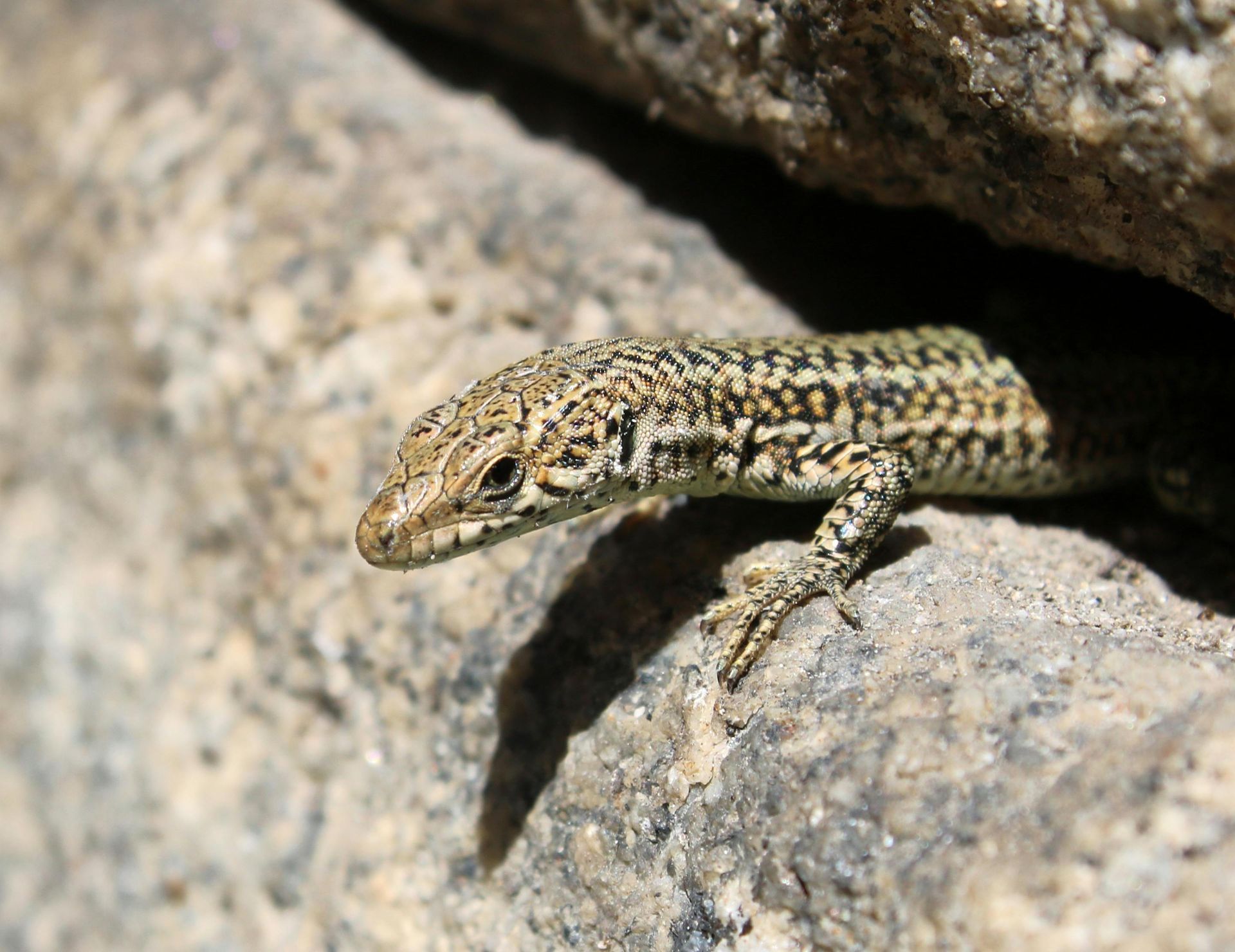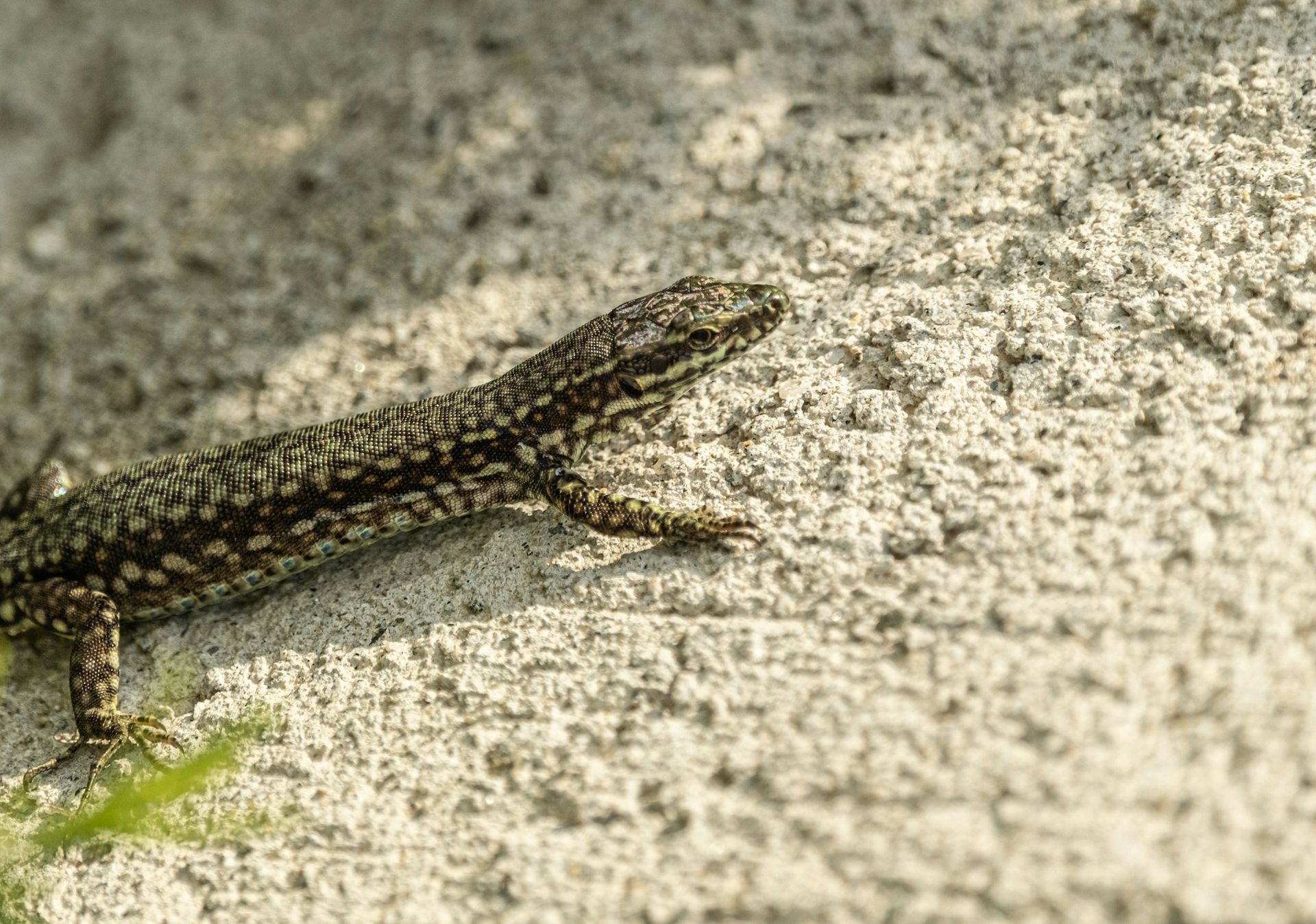Lizards are a diverse group of reptiles found across the globe, inhabiting deserts, forests, grasslands, and urban areas. With over 6,000 species, lizards play vital roles in ecosystems by controlling insect populations and serving as prey for larger predators. Common lizards in North America include the Western Fence Lizard and the Alligator Lizard.
Lizards range widely in size, from tiny geckos measuring just a few inches to large monitor lizards exceeding 6 feet in length. They typically have scaly skin, long tails, and sharp claws for climbing or digging. Most lizards are insectivores, feeding on insects and spiders, although some species are herbivores or omnivores.
Lizards are ectothermic (cold-blooded) and rely on external heat sources to regulate their body temperature. They are known for their agility and ability to escape predators, with some species capable of shedding their tails as a defense mechanism. Breeding occurs in the spring and summer, with females laying eggs in concealed locations or giving live birth, depending on the species.
Natural predators include birds, snakes, and mammals. Human-related threats such as habitat loss, pesticide use, and climate change also affect lizard populations. Despite these challenges, many lizards have adapted well to human environments.

For your safety and the well-being of wildlife, please observe animals from a distance and avoid touching or disturbing them. If you encounter an animal that appears injured or in distress, contact a licensed wildlife rescue organization for guidance before intervening.
Found An Animal? Not sure how to help a wild animal in need? Learn when to step in, who to call, and how to help safely.
Did You Know?
- Western Fence Lizards can reduce Lyme disease risk by killing the bacteria in ticks that feed on them.
- Alligator Lizards are known for their fierce defensive behavior, including biting and tail shedding.
- Some lizards, like the Green Anole, can change color to blend into their surroundings.
- Lizards use body language such as head-bobbing and push-ups to communicate and establish dominance.
- Unlike snakes, most lizards have eyelids and can blink.
- The Horned Lizard can squirt blood from its eyes as a defense mechanism against predators.
- Geckos have specialized toe pads that allow them to climb vertical surfaces, including glass.
- Some lizards, like the Night Lizard, give birth to live young rather than laying eggs.
- Desert lizards can survive extreme heat by burrowing underground during the hottest part of the day.
Problems Faced In The Wild
- Habitat Loss: Urbanization and agriculture reduce available habitat and shelter.
- Pesticide Use: Chemicals reduce insect populations and can poison lizards indirectly.
- Climate Change: Altered temperatures and precipitation patterns affect hibernation and food availability.
- Predation: Increased presence of domestic cats and other introduced predators threatens lizards.
- Road Mortality: Lizards are vulnerable to being struck by vehicles when basking on roads.
- Human Disturbance: Recreational activities can disrupt lizard habitats and nesting sites.
Tips For Cohabitation
- Preserve Natural Habitat: Maintain rocky areas and native vegetation to provide shelter.
- Avoid Using Pesticides: Protect insect populations that lizards rely on for food.
- Provide Rock Piles and Logs: These offer excellent basking and hiding spots for lizards.
- Reduce Cat Predation: Keep domestic cats indoors to protect lizard populations.
- Create a Water Source: Small, shallow water features can help lizards stay hydrated.
- Educate the Community: Share the importance of lizards in controlling pests and maintaining balanced ecosystems.



